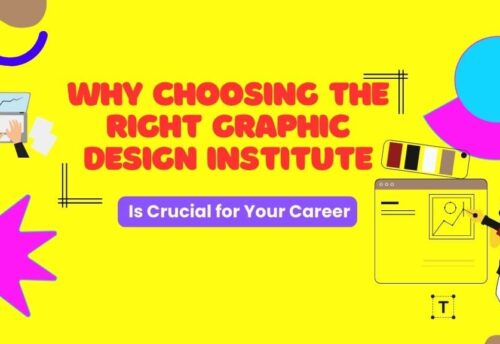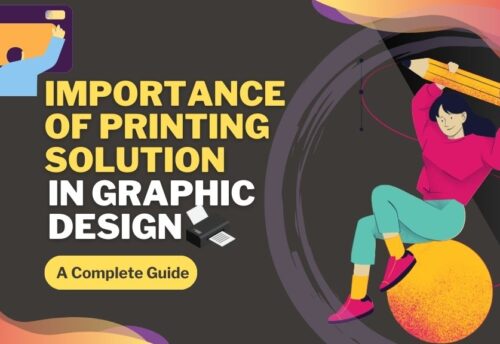
Top 5 Graphic Design Trends to Watch Out for in 2025
The world of graphic design is constantly evolving, with new trends emerging every year to shape the way brands and designers communicate visually. As we step into 2025, several design trends are poised to dominate the industry, offering fresh ways to engage audiences and create stunning visuals. If you’re a graphic designer or a business owner looking to stay ahead of the curve, it’s crucial to understand the upcoming trends that will define the visual landscape of the year.
In this blog post, we will explore the top 5 graphic design trends to watch out for in 2025 that are set to influence the design world.
1. 3D and Immersive Design
As technology continues to advance, 3D design is becoming more prominent in graphic design. The days of flat, two-dimensional visuals are being replaced with dynamic, three-dimensional graphics that create more depth, realism, and interaction. In 2025, immersive 3D design will take center stage across various platforms, from websites and mobile apps to digital ads and social media posts.
Why it’s important:
- Enhanced realism and depth: 3D design allows for more detailed and lifelike visuals, which can captivate audiences.
- User engagement: Immersive designs create a more interactive and engaging experience for users, particularly in the gaming, e-commerce, and entertainment industries.
Expect to see 3D typography, product rendering, and motion graphics being used in new and innovative ways. Graphic designers will have the ability to craft virtual environments, allowing users to interact with designs more organically.
2. Minimalist and Clean Designs
While minimalism has been a popular design trend for several years, it’s expected to continue to dominate in 2025. The trend focuses on simplicity, clean lines, and a reduced color palette. This minimalist approach ensures that the message is clear and easy to digest, creating an effortless visual experience.
Why it’s important:
- Clear communication: Minimalist designs are easy to understand, ensuring that the message is communicated effectively.
- User-friendly: A clean and simple design makes it easier for users to navigate and interact with the content, especially on mobile devices.
In 2025, expect to see even more streamlined designs with simple typography, plenty of white space, and bold, impactful visuals. The minimalist aesthetic will continue to be popular in branding, website design, and digital marketing materials.
3. Bold and Experimental Typography
Typography is no longer just about legibility—it’s about making a statement. In 2025, bold and experimental typography will be at the forefront of graphic design. Designers will push the boundaries of traditional fonts by experimenting with new shapes, sizes, and layouts, creating visually striking text that grabs attention.
Why it’s important:
- Brand identity: Creative typography can help brands stand out and communicate their unique voice and personality.
- Visual interest: Unconventional and dynamic typography adds visual interest and energy to designs, making them more engaging for audiences.
From custom fonts and hand-drawn lettering to dynamic typography that changes shape or form, this trend allows graphic designers to create innovative text-driven designs that leave a lasting impression.
4. Retro and Nostalgic Design
As nostalgia continues to influence various aspects of pop culture, retro design is making a strong comeback. In 2025, we’ll see a resurgence of design styles from the ‘80s, ‘90s, and even earlier, influencing everything from logos and branding to website layouts and digital art. This trend will incorporate bright neon colors, pixel art, and bold graphic elements that evoke a sense of nostalgia.
Why it’s important:
- Emotional connection: Nostalgic designs often evoke powerful emotions, creating a deeper connection with the audience.
- Stand out in a crowded market: Retro designs offer a fresh take on modern visuals, helping brands differentiate themselves from competitors.
Graphic designers will likely experiment with vintage color schemes, grainy textures, and retro fonts to create designs that appeal to both older generations and younger audiences drawn to “vintage” aesthetics.
5. AI-Generated Designs
With the rise of artificial intelligence (AI) and machine learning, graphic designers will increasingly use AI tools to generate designs or assist in the design process. From automated layout suggestions to AI-driven image enhancement, these tools will help speed up design workflows and provide designers with more creative options.
Why it’s important:
- Increased efficiency: AI tools can help designers streamline tasks, allowing them to focus on higher-level creative work.
- New possibilities: AI opens up new design possibilities, including personalized designs, data-driven layouts, and automated content creation.
While AI may not completely replace human designers, it will certainly enhance the creative process, making it easier for designers to experiment with new ideas and concepts that were previously difficult or time-consuming to achieve.
Conclusion
As we head into 2025, graphic design will continue to evolve with exciting new trends that reflect advances in technology, cultural shifts, and changing user expectations. Whether it’s through immersive 3D designs, bold typography, or AI-driven creativity, these trends will shape the way we experience and interact with visual content.
For graphic designers, staying updated with these trends is essential to remain competitive and create designs that resonate with modern audiences. By embracing these emerging trends and incorporating them into your designs, you can create innovative, eye-catching visuals that capture attention and leave a lasting impact.
If you’re looking to stay ahead of the curve and master the latest graphic design techniques, consider enrolling in a Graphic Design course that offers hands-on experience with cutting-edge tools and trends.


